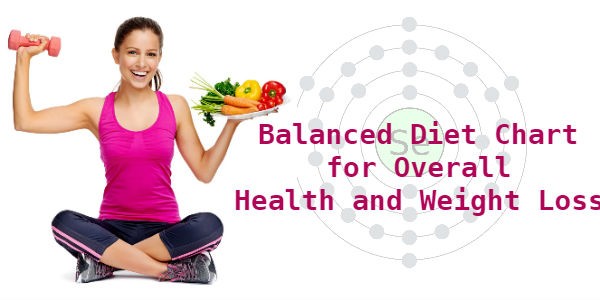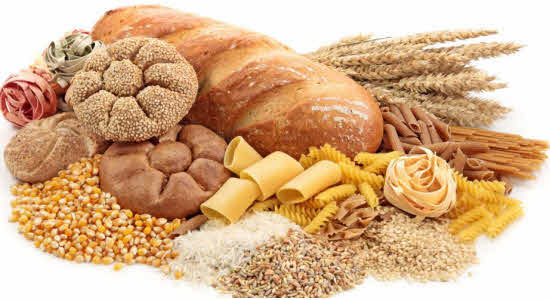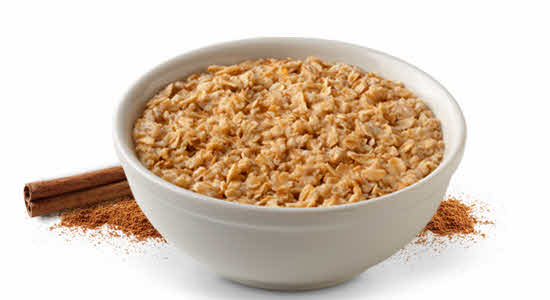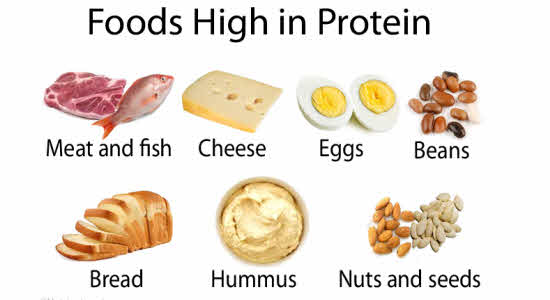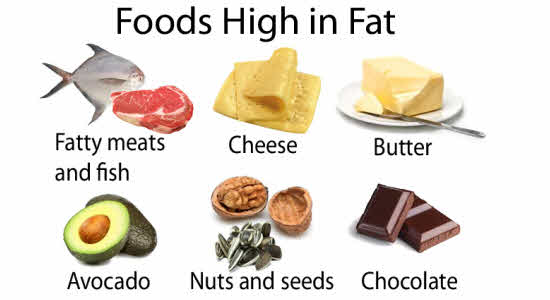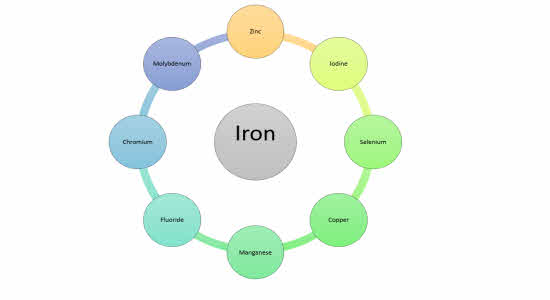Balanced Diet Chart for Maintaining Overall Health and Weight Loss
Our modern lifestyle with is over-dependence of processed and packed foods are one of the main reasons for increasing cases of chronic diseases. The high amount of refined carbs, unhealthy fats, sugar and sodium in processed and fast foods not only lead to uncontrolled weight gain and obesity, but also increase the risk of type 2 diabetes, heart diseases, cancer, etc.One of the most effective ways to reduce the risk of chronic diseases and improve the overall quality of life is to opt for a healthy and balanced diet that consists of healthy whole foods and contains the macronutrients and micronutrients in the right proportion. Now, most people don’t usually consume the necessary amount of nutrients in their regular diets, and that’s okay; you can still get these trusted essential nutrients through supplements, in addition with your efforts to maintain a well-balanced diet.
Important Macronutrients – Carbohydrates, Proteins and Fats
Macronutrients are the main essential nutrients that provide energy to the body and they are required for various body functions such as growth, metabolism, etc. These nutrias are named macronutrients because they are required in large amounts by the body.
Carbohydrates
Carbohydrates make it to the top of the list of macronutrients in a healthy diet because the body requires it in the largest amounts. According the Dietary Reference published by the USDA, 45 to 55% of the daily calories should come from carbohydrates.
Why do we need carbohydrates?
- Acts as the main source of fuel for the body
- Readily used by the body for producing energy
- It breaks down into glucose that can be used by all cells and tissues in the body
- Carbs are required by the central nervous system, kidneys, brain and muscles to work properly
- Carbs can be stored in the muscles and liver and used later for energy
- Required for maintaining proper intestinal health and waste elimination
Choosing the right type of carb
Health conscious people and weight watchers often shun carbs all together for the fear of weight gain. But not all carbs are same. The trick is to choose the right kind of carb in include it in your healthy eating plan. There are two types of carbs – refined carbs and complex carbs. Simple or refined carbs come from white rice, white flour, white bread, etc which break down readily in the intestine and cause sudden spike in blood sugar. Complex carbs that come from whole grains, brown rice, oats, millets, vegetables, etc breakdown slowly in the intestine and act as a consistent source of energy for the body.
Simple Carbs
Simple carbohydrates such as sugar, white rice, all-purpose flour, baked goods, etc have a simple molecular structure, i.e., they are made of 1-2 sugar molecules. Simple or refined carbohydrates have a high glycemic index. High glycemic foods breakdown and digest rapidly in the intestine leading to sudden spike in blood glucose levels which in turn leads to increase in the level of insulin in order to balance the level of blood glucose in the body. These fluctuations can be extremely harmful for people with diabetes. Increased level of insulin also leads to weight gain. Not all simple carbs are bad or unhealthy. Simple sugars found in milk, yogurt, cottage cheese and fruits are healthy and should be consumed in moderation.
Complex Carbs
Complex carbohydrates such as whole grains, brown rice, oats, lentils, legumes and vegetables are also made up of sugar. But these sugar molecules are bound together to form longer and more complex chains. Whole grains contain the barn and the germ which are considered the healthiest parts of the grains. They are also high in dietary fiber that keep you feeling fuller for longer, which is the ultimate answer to the question of how to lose weight quickly. Complex carbs take it longer to digest and breakdown in the intestine. They work as consistent slow-releasing sources of energy.
Fiber
Fibers are yet another important part of a healthy diet chart that comes from carbohydrates. Fiber is the indigestible portion of plant materials that passes straight through the gut without being absorbed. Fibers are great colon cleansers that keep the digestive process running in a healthy way. Moreover, fibers are exceptionally low in calories. There are two types of fiber – soluble and insoluble. Fruits and vegetables are the best sources of dietary fiber.
Proteins
Proteins act as the building blocks of muscles. Protein is the main component of all the cells present in the body right from the hair and skin to soft tissues. Including proteins in each and every meal is the fastest way to lose weight because the body burns more calories in digesting protein than carbs or fats. Proteins are broken down by the digestive system to form amino acids that are required for building muscles, normal growth of the body and quick healing of wounds and injuries. According to the dietary references published by USDA, 10 to 35% of calories come from protein.
Why do we need protein?
- For growth and development
- Repair of tissue
- Immune function
- Making essential hormones and enzymes
- Acting as an alternative source of energy in the absence of carbs
- Preserving lean muscle mass
Some of the healthiest sources of protein include meats, poultry, eggs, fish, cheese, milk, nuts, legumes and lentils.
Fats
Although, most of us try to stay away from fat because of its negative reputation for causing weight gain, we don’t realize that some healthy fats are essential for our survival. Fats must be included in a balanced and healthy diet meal plan to provide energy, synthesize hormones and store vitamins. It is best to consume a good blend of various types of oils to get the right proportion of all these kinds of fats – polyunsaturated, monounsaturated and omega-3 fatty acids. According to the Dietary Reference published by USDA, 20 to 35% of the calories should come from fats.
Why do we need fats?
- Normal growth and development
- It acts as the most concentrated source of energy
- Absorbing fat soluble vitamins – Vitamins A, D, E, K and carotenoids
- Providing cushioning to organs
- Maintenance of cell membranes
Types of Fats
There are 4 main types of fats – saturated fats, trans fats, unsaturated fats and omega-3 fatty acids.
Healthy Fats
Unsaturated fats and omega-3 fatty acids are considered the healthiest of fats.
Unsaturated Fats
All sources of fats comprise of a mixture of saturated and unsaturated fats. The trick is to choose the foods that contain the higher concentration of unsaturated fats and less saturated fat. Unsaturated fats contain higher proportion of unsaturated fatty acids that are liquid at room temperature. The Monounsaturated and polyunsaturated fats maintain healthy cholesterol levels and polyunsaturated fats provide essential fatty acids to the body.
Some of the best sources of unsaturated fats include olive oil, rapeseed oil, sunflower oil, avocados, nuts and seeds.
Omega 3 Fatty Acids
Omega 3 fatty acids are a specific group of polyunsaturated fatty acids that help to maintain healthy heart, prevents blood clotting and regulates heart rhythm. Omega-3 fatty acids are also required during pregnancy and breastfeeding to support the development of the child.
Some of the best sources of oemga-3 fatty acids include fatty fishes such as salmon, mackerel, sardine, herring, trout and fresh crab, along with flax, linseed oil and walnuts.
Unhealthy Fats
Saturated fats and Trans fats found in fatty cuts of meat, full-fat dairy products and processed foods are considered harmful for health.
Saturated Fats
Excessive intake of saturated fats increases the level of cholesterol in the blood that leads to heart diseases and stroke. High intake of saturated fats increases the level of harmful LDL cholesterol that builds up in the blood vessels narrow them down and increases the risk of blood clots.
Foods Containing Saturated Fats – fatty meats, full fat dairy products, processed foods, butter, lard, palm oil, coconut oil, etc.
Trans Fats
Trans fats are found in trace amounts in meat and dairy products and in much larger amounts in partially hydrogenated vegetable oils. Trans fats have a more adverse effect on blood cholesterol levels compared to saturated fats.
Micronutrients – Vitamins and Minerals
Micronutrients play a crucial role in a balanced diet. They provide essential nutrients that aid prevention and treatment of various diseases and conditions and optimize physical and mental functioning. Vitamins and minerals are the two main types of micronutrients. While micronutrients are named so because they are required in small amounts, they play important roles in regulation of metabolism, regulating heart beat and pH of cells and maintaining bone density.
List of Micronutrients in Balanced Diet
Vitamin A – Vitamin A is a fat soluble vitamin and powerful antioxidant that plays a crucial role in maintaining healthy vision, proper neurological function, healthy skin, etc. It also reduces inflammation and neutralizes the damage caused by free radicals. Vitamin A also strengthens the bones and supports immune function.
Food Source of Vitamin A – Milk, cheese, egg yolk, orange and yellow vegetables and fruits such as carrots, yellow bell peppers, squash along with spinach and other leafy green vegetables.
Vitamin B
B vitamins are a group of water-soluble vitamins that play an important role in cell metabolism. The group consists of chemically distinct vitamins that co-exist in the same foods. There are eight specific B-vitamins – vitamins B1, B2, B3, B5, B6, B7, B9 and B12.
Food sources of B-vitamins – Red meat, dark leafy green vegetables, fortified whole grain cereals, green peas, lentils, nuts, milk, yogurt, cheese, legumes, soy products, potatoes, etc.
Vitamin C
Vitamin C, also known as L-ascorbic acid, is a water soluble vitamin that is required by the body for biosynthesis of collagen and protein metabolism. Collagen is an essential component of connective tissues that facilitate wound healing. Vitamin C also acts as an antioxidant that limits the damaging effects of free radicals, prevents cardiovascular diseases and delays the development of certain cancers.
Food sources of vitamin C – Red peppers, oranges, grapefruit, Kiwifruit, strawberries, tomato juice, cauliflower, cabbage, broccoli, cantaloupe, spinach, green peas, etc.
Vitamin D
This is yet another fat-soluble vitamin that is present in very few foods. Sun is the main source of vitamin D. When sunlight strikes the skin, it triggers the synthesis of vitamin D. Vitamin D promotes calcium absorption in the gut and supports bone growth and bone remodeling. Vitamin D also aids modulation of cell growth, supports immune function and reduces inflammation.
Food source of vitamin D – cod liver oil, salmon, tuna, mushrooms, sardine, liver, eggs, cheese, fortified orange juice, fortified milk, fortified yogurt, fortified cereal, etc.
Vitamin E
It is a fat-soluble vitamin which acts as a powerful antioxidant in the body. Vitamin E prevents free radical damage to specific fats and helps to maintain proper function of many organs. Vitamin E repairs damaged skin and thicken the hair. It improves vision and slows down cognitive decline.
Food sources of vitamin E – Almonds, sunflower seeds, hazelnuts, avocado, wheat germ, broccoli, spinach, butternut squash, kiwifruit, tomatoes, etc.
Iron
Iron is one of the most important minerals required by the human body to transport oxygen throughout the body. Iron also supports the functions of the immune system and helps to prevent anemia in women.
Food sources of iron – Red meat, organ meat, spinach, beans, lentils, tofu, dried fruits, raisins, etc.
Calcium
Calcium is the most abundant mineral in the human body and it is required for developing and maintaining healthy bones and teeth. Calcium deficit in the body can lead to osteoporosis, rickets, hypertension and raised cholesterol.
Food sources of calcium – Milk, cheese, yogurt, dark leafy vegetables, broccoli, sardines, salmon, oysters, etc.
Magnesium
This is perhaps one of the most neglected minerals, but magnesium is required in over 300 chemical reactions in the body. Magnesium helps to maintain healthy cells, provides energy, regulates blood pressure and prevents insulin resistance.
Food sources of magnesium – Bran cereal, brown rice, almonds, Swiss chard, molasses, pineapple, soybeans, oats, etc.
Zinc
The main role of zinc in the body is to regulate the regular development of new cells within the body. Zinc also supports a strong immune system, speeds up wound healing and improves fertility.
Food sources of zinc – Seafood such as oysters and crab, spinach, cashew, beans, dark chocolate, pork shoulder and tenderloin, fortified cereals, etc.
Selenium
Selenium is an essential mineral found in the body in small amounts. It functions as an antioxidants combined with vitamin E. It helps to fight the free radicals that damage cell membranes and DNA. Selenium also helps to regulate thyroid function and immune system function.
Food sources of selenium- Brewer’s yeast, wheat germ, liver, butter, tuna, herring, mackerel, shellfish such as oysters, scallops and lobsters, garlic, sunflower seeds, Brazil nuts, whole grains, etc.
Sample Balanced Diet Chart
Here we provide a simpla balanced diet chary for overall health
Breakfast in Balanced Diet Chart
1 cup milk/tea/coffee/green tea + 1 bowl poha prepared with sprouts or vegetables
Or
2 slices of brown bread with 1 omlette
Or
1 bowl of oats with milk and nuts and raisins
Mid-morning in Balanced Diet Chart
1 apple
Or
A cup of vegetable sticks with yogurt
Or
A cup of cottage cheese with berries
Lunch in Balanced Diet Chart
1 bowl of mixed vegetable salad/1 bowl of soup/ stir fry vegetables + 1 bowl dal/paneer subzi/ chicken stew/ baked fish/ boiled eggs + 2 chapatti/1 bowl of brown rice + 1 bowl curd/1 glass unsweetened lassi
Afternoon in Balanced Diet Chart
1 cup of tea + 6 almonds
Or
1 cup of black coffee + 3 to 4 walnuts
Evening in Balanced Diet Chart
Handful of dry roasted chickpeas + 1 orange
Or
Handful of dry roasted Bengal gram + 1 peal
Dinner in Balanced Diet Chart
1 bowl of mixed green salad/1 bowl soup/ mixed vegetables curry + 1 bowl dal/chicken stew/baked fish/boiled eggs + 2 chapatti/ 1 bowl barley or Dalia + 1 glass of buttermilk
Bed time in Balanced Diet Chart
1 glass of milk (optional)
A healthy diet that helps to maintain overall health and promote weight loss must contain all the essential nutrients in the right proportion. Starving or fad diets can never work as permanent solutions. A healthy eating plan along with regular exercise is the best way to promote sustainable weight loss.
Image Credits;
wisegeek.org,colombod2.wordpress.com,nutrientsreview.com,marksminerals.weebly.com,healthyshakeoutlet.com

